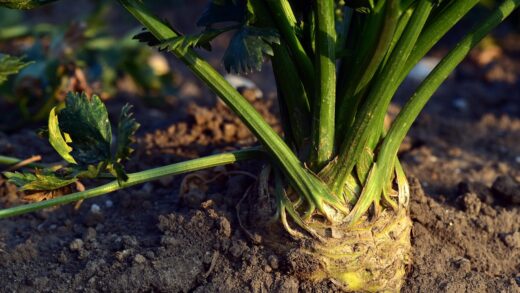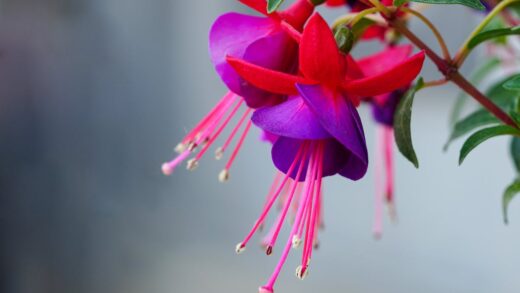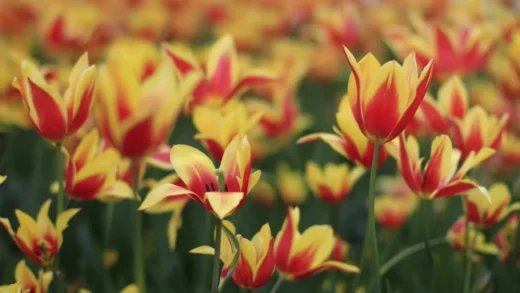The successful establishment and multiplication of the dwarf iris hinges on a clear understanding of the proper techniques for planting and propagation. These processes, while straightforward, require attention to detail regarding timing, rhizome placement, and site preparation to ensure the plants not only survive but thrive for years to come. By mastering the art of planting these resilient perennials correctly from the start, and by learning the simple yet effective method of division, a gardener can quickly transform a few initial plants into a magnificent, spreading carpet of early spring color. This foundational knowledge is the key to unlocking the full potential of these charming garden gems.
The journey to a flourishing stand of dwarf irises begins with the careful selection and preparation of the ideal planting site. These plants are uncompromising in their need for excellent drainage, as their rhizomes are highly susceptible to rot in waterlogged soil. Choose a location that is naturally well-draining, such as a gentle slope, a raised bed, or a dedicated rock garden. If your garden has heavy clay soil, you must take steps to amend it by thoroughly incorporating coarse sand, fine gravel, or compost to improve its porosity and structure, creating a much more hospitable environment for the rhizomes.
Sunlight is another non-negotiable requirement for the dwarf iris, which needs a location that receives a minimum of six hours of direct sun each day. Full sun exposure is critical for promoting vigorous growth and ensuring the production of a robust display of flowers. Furthermore, the sunlight helps to bake the rhizomes during their summer dormancy period, a crucial phase in their life cycle that helps to prevent rot and encourages the formation of the following year’s flower buds. Therefore, avoid planting them in shady spots or where they will be overshadowed by larger perennials or shrubs.
Before planting, it is essential to prepare the soil bed thoroughly. Loosen the soil to a depth of at least six to eight inches to allow for easy root penetration and improved drainage. This is also the perfect time to incorporate any necessary amendments, such as compost for fertility or grit for drainage. A light dusting of bone meal or a low-nitrogen, high-phosphorus fertilizer can also be worked into the soil to provide the essential nutrients needed for strong root establishment and future flowering.
Ensuring the soil pH is within the preferred range for dwarf irises, which is neutral to slightly alkaline (pH 6.8-7.5), will also contribute significantly to their success. If your soil is naturally acidic, an application of garden lime can help to raise the pH to a more suitable level. By investing this initial effort into selecting the right site and preparing the soil meticulously, you create the perfect foundation for healthy, resilient plants that will reward you with a spectacular show of color each spring.
The process of planting rhizomes
The correct planting of dwarf iris rhizomes is a simple but precise process that is critical for the plant’s health and ability to flower. The most important rule to remember is that these rhizomes must not be planted too deeply. The top surface of the rhizome should be positioned so that it is either level with the soil surface or even slightly exposed, especially in heavier soils. Planting them too deep is a common mistake that prevents the rhizome from receiving the sun-baking it requires and significantly increases the risk of it rotting in the ground.
When you are ready to plant, dig a shallow hole that is wide enough to accommodate the rhizome and its roots comfortably. Create a small mound of soil in the center of the hole. Place the firm, fleshy part of the rhizome directly onto this mound, and then spread the roots out down the sides of the mound. This technique ensures that the roots are well-positioned to anchor the plant and seek out moisture and nutrients, while the rhizome itself rests securely at the correct depth.
Proper spacing between rhizomes is also important to allow for good air circulation and future growth. Plant individual dwarf iris rhizomes approximately four to six inches apart. This may seem sparse at first, but they will quickly multiply and fill in the space to form a dense clump within a few years. This spacing gives each plant enough room to access sunlight and nutrients without excessive competition and helps to prevent the spread of fungal diseases that can thrive in overcrowded conditions.
After positioning the rhizome and spreading out its roots, carefully backfill the hole with soil, gently firming it down around the plant to eliminate any large air pockets. Once the rhizome is securely in place, with its top just at or slightly above the soil level, you should water it in thoroughly. This initial watering helps to settle the soil around the roots and provides the moisture needed to encourage the plant to break dormancy and begin its new growth cycle.
Propagation through division
Propagation of dwarf irises is most commonly and effectively achieved through the process of division. This method not only allows you to increase your stock of plants but is also a necessary maintenance task to ensure the long-term health and vigor of your iris clumps. Over time, as the rhizomes multiply and the clump becomes congested, the flowering performance will decline. Dividing the clump every three to five years rejuvenates the plants and restores them to their full flowering potential.
The ideal time to divide dwarf irises is during their dormant period in the late summer or early autumn, typically from July to September. This timing allows the newly divided and replanted rhizomes sufficient time to establish a new root system before the ground freezes for winter. Attempting to divide them during their active growth phase in the spring can cause significant stress to the plant and may sacrifice that year’s flowering. Therefore, patience and proper timing are key to a successful division.
The division process itself is quite straightforward. Begin by carefully lifting the entire clump from the ground using a garden fork, inserting it a few inches away from the edge of the clump to avoid damaging the rhizomes. Once lifted, gently shake or wash off the excess soil so you can clearly see the network of interconnected rhizomes. You will often find that the older, central parts of the clump may be woody and non-productive, while the younger, healthier growth is found around the perimeter.
Using your hands, you can often break the clump apart into smaller sections. For tougher, more entangled clumps, a sharp, sterilized knife may be necessary to make clean cuts. Each new division should consist of a healthy, firm rhizome with a fan of leaves (which should be trimmed back to about three or four inches) and a good set of roots. Be sure to inspect each piece carefully and discard any rhizomes that are soft, hollow, or show any signs of disease or pest infestation, as this ensures only healthy stock is replanted.
Replanting divided rhizomes
After you have successfully divided the main clump into healthy, viable sections, the next crucial step is to prepare these divisions for replanting. Before they go back into the ground, it is a standard and highly recommended practice to trim the leaf fans. Using clean pruning shears, cut the leaves back to a height of approximately three to four inches. This trimming serves two important purposes: it reduces the amount of water lost through transpiration, allowing the plant to focus its energy on root development, and it makes the plant more stable in the ground, preventing it from being dislodged by wind before it has anchored itself with new roots.
Simultaneously, you should prepare the new planting site, whether it is the original location or a new area of the garden. Even if you are replanting in the same spot, it is vital to rejuvenate the soil. Work a generous amount of compost or other well-rotted organic matter into the soil to replenish the nutrients that the previous dense clump of irises has consumed over the years. This is also an excellent opportunity to add a small amount of bone meal to provide the phosphorus needed for strong root growth and future flower production.
When replanting the individual divisions, follow the same principles as for planting new rhizomes. Dig a shallow hole, create a small mound in the center, and place the rhizome on top, fanning the roots down the sides. Ensure the top of the rhizome is positioned at or just slightly above the soil surface. Space the divisions about four to six inches apart to provide adequate room for them to develop into new clumps over the next few years. This spacing is key to maintaining good air circulation and preventing the rapid onset of overcrowding.
Once all the divisions are replanted, water them in thoroughly to settle the soil and eliminate air pockets around the roots. For the first few weeks after replanting, monitor the soil moisture and provide additional water if the weather is particularly dry. This initial period of attentive watering is critical for helping the divisions establish a robust new root system before the onset of winter. With this care, your newly replanted irises will be well-prepared to emerge vigorously the following spring.
Propagation from seed
While division is the most common and reliable method for propagating dwarf irises, growing them from seed offers a unique and rewarding experience, particularly for patient gardeners or those interested in hybridization. It is important to understand that irises grown from seed will not be identical to the parent plant, which can lead to exciting variations in color and form. Seed propagation is a much slower process, often taking two to three years from sowing before the first flowers appear, so it requires a significant commitment of time and effort.
To begin, you must first harvest the seeds. After the iris flowers fade, they will be replaced by a seed pod if pollination was successful. Allow this pod to ripen on the plant, turning from green to a brownish-tan color and beginning to split open. Once the pod is dry, you can collect the seeds inside. It is generally best to sow the seeds as soon as they are ripe in the late summer or autumn, as fresh seeds tend to have a higher germination rate.
Dwarf iris seeds have a natural dormancy mechanism and require a period of cold, moist conditions to germinate, a process known as stratification. You can achieve this naturally by sowing the seeds directly into a well-prepared outdoor seedbed or in pots that are left outside to experience the winter weather. Plant the seeds about half an inch deep in a sterile, well-draining seed-starting mix. The natural cycle of freezing and thawing over the winter will break the seeds’ dormancy.
If you prefer to start the seeds indoors, you can mimic this process through artificial stratification. Place the seeds in a small bag with some moist sand or vermiculite and store them in the refrigerator for a period of 60 to 90 days. After this cold treatment, sow the seeds in pots and keep them in a warm, bright location. Germination can be erratic, so be patient. Once the seedlings have developed a few true leaves and are large enough to handle, they can be carefully transplanted into individual pots or a nursery bed to continue growing until they are mature enough to be planted in their final garden location.
📷 Jerzy Opioła, CC BY-SA 4.0, via Wikimedia Commons


















